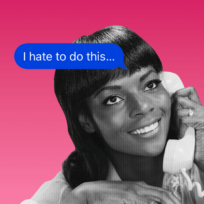Every year in early November I feel personally attacked by a little thing called Daylight Saving Time. Though it’s said that it was put in place to reduce the use of electricity by extending daylight hours, the effects can feel anything but sunny for late risers like myself who are lucky to see eight hours of actual sunlight. If you tend to feel more sluggish and sadder during this time of the year, you may be suffering from seasonal affective disorder or SAD, a type of depression that usually happens in the fall and/or winter and is more likely to affect women over the age of 20, according to Dr. Jenny Taitz, clinical psychologist and author of How To Be Single And Happy. Dr. Taitz and I discussed some strategies to combat SAD and help you to feel your best, even when the weather and amount of light are literally the worst.
1. Find The Light

It’s not just you—there’s a science behind why you feel so sh*tty during the fall and winter months. According to Dr. Taitz, “Shorter days and reduced daylight can impact the brain and lead to feeling more lethargic, sad, and hopeless.” One of the best ways to target the problem is to seek out natural sunlight whenever possible, even with a short walk around the block. Another effective method is to purchase a light box designed specifically to treat people with SAD. The light emitted from the boxes mimics natural sunlight and produces effects in the brain that aid emotional regulation. Dr. Taitz notes that in many cases your doctor may be able to prescribe a light box that’s covered by insurance, but adds that there is a specific protocol to follow when using a light box, so it’s best to consult with your physician rather than treating yourself.
2. Watch Your Diet
If you’re anything like me, you may find yourself craving sweets and carbs every day more so than usual during this time of the year. This is because people with SAD tend to eat more foods that are rich in carbohydrates. As much as it pains me to type this, it’s a good idea to cut down on the carbs and stick to a diet rich in fruits and vegetables in order to combat depression. Studies have also found a link between SAD and low levels of vitamin D, so another useful strategy is taking vitamin D supplements or eating foods that are rich in vitamin D like eggs, salmon, and wild mushrooms.
3. Resist The Urge To Retreat

Because you aren’t feeling your best, you may feel tempted to stay at home and watch Schitt’s Creek until the next iteration of Daylight Saving Time retreat into yourself. To the extent you’re able, fight this urge and stick to a regular routine of seeing friends and family or doing something else you normally love to do. Dr. Taitz works with patients to create an “antidepressant schedule” consisting of things like plans with friends or a workout class that keeps them active and engaged. We are social creatures and being around other people helps to counteract the isolation and loneliness that SAD breeds.
4. Keep It Moving

Because our energy is lower during this time of year, it can be hard to summon the strength to get out of bed, let alone make it to a barre class. However, exercising not only boosts mood and focuses the mind, it also helps to maintain your circadian rhythm, which, when disrupted, is thought to bring about SAD symptoms. Ideally, if you can work out outside, you’ll not only get the benefits of exercise, you’ll also be exposed to natural light. If that’s not possible, then just stick to any routine that gets you moving.
5. Seek Professional Help

Depending on the severity of your symptoms, doing any of the above may feel downright impossible. If that’s the case, it’s time to seek help from a professional who can diagnose you and help you come up with a treatment plan. Dr. Taitz suggests cognitive behavioral therapy (CBT), which teaches you to notice your thought patterns: “I always encourage people to see emotional setbacks as opportunities rather than stuck points—rally your courage and problem solve,” she says. Many people suffering from SAD find that certain antidepressants can work wonders on symptoms. A doctor can tell you which medicine may be right for you and how long to take it, as antidepressants may take time to kick in and should generally not be stopped cold turkey.
If you’re feeling less than stellar this time of year, know you’re far from alone. SAD is treatable and you don’t have to spend the next few months in a dark hole. What other coping strategies do you use to combat SAD during the winter months? Let me know in the comments.
Images: Joshua Rawson-Harris / Unsplash; Giphy (5)




















































